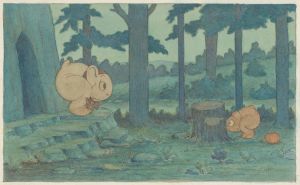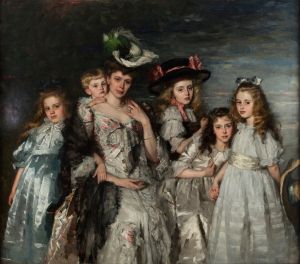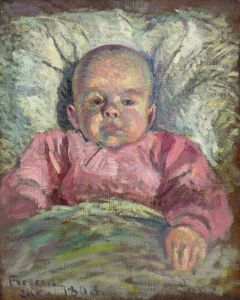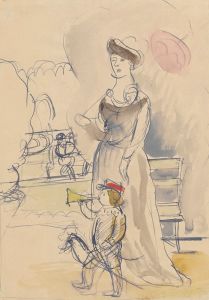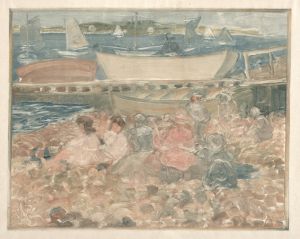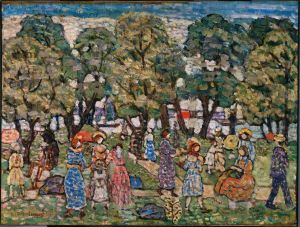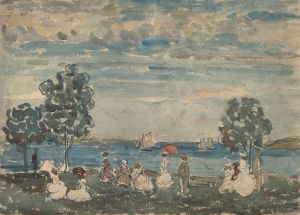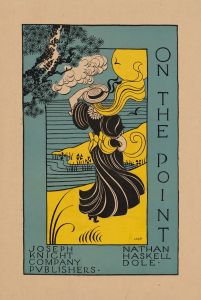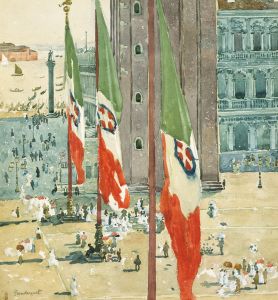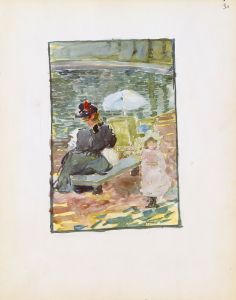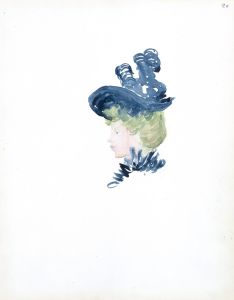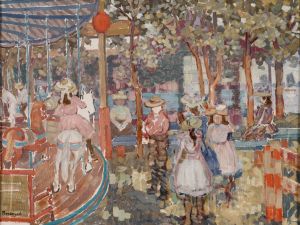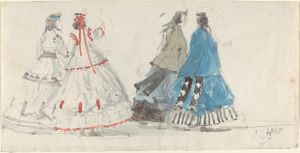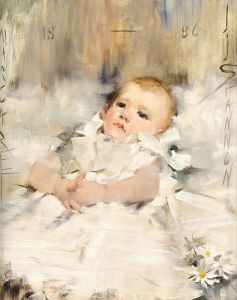
A mother pushing her baby in a perambulator, with her daughter at her side
A hand-painted replica of Maurice Prendergast’s masterpiece A mother pushing her baby in a perambulator, with her daughter at her side, meticulously crafted by professional artists to capture the true essence of the original. Each piece is created with museum-quality canvas and rare mineral pigments, carefully painted by experienced artists with delicate brushstrokes and rich, layered colors to perfectly recreate the texture of the original artwork. Unlike machine-printed reproductions, this hand-painted version brings the painting to life, infused with the artist’s emotions and skill in every stroke. Whether for personal collection or home decoration, it instantly elevates the artistic atmosphere of any space.
Maurice Prendergast was an American Post-Impressionist artist known for his vibrant and colorful depictions of urban scenes and leisurely activities. One of his notable works is "A Mother Pushing Her Baby in a Perambulator, with Her Daughter at Her Side." This painting exemplifies Prendergast's unique style and his interest in capturing the essence of modern life in the early 20th century.
Prendergast was born in St. John's, Newfoundland, in 1858, and later moved to Boston, Massachusetts, with his family. He initially worked as a commercial artist before studying painting in Paris, where he was influenced by the Impressionists and Post-Impressionists. This exposure to European art movements significantly shaped his artistic approach, leading him to develop a distinctive style characterized by bold colors, flattened forms, and rhythmic compositions.
"A Mother Pushing Her Baby in a Perambulator, with Her Daughter at Her Side" reflects Prendergast's fascination with everyday scenes and his ability to transform them into vibrant, decorative compositions. The painting depicts a mother pushing a baby carriage, accompanied by her young daughter, set against a lively urban backdrop. Prendergast's use of color is particularly striking, with a palette that includes rich blues, greens, and reds, creating a sense of movement and vitality.
The composition of the painting is carefully arranged, with the figures positioned in a way that guides the viewer's eye across the canvas. Prendergast's technique involves the use of broad, expressive brushstrokes and a focus on pattern and design, rather than detailed realism. This approach aligns with the Post-Impressionist movement, which emphasized the artist's subjective interpretation of the world rather than a direct representation.
Prendergast's work often features scenes of leisure and recreation, capturing the spirit of the time when urban parks and public spaces became popular venues for social interaction. His paintings frequently include groups of people engaged in activities such as walking, picnicking, or enjoying a day at the beach. In "A Mother Pushing Her Baby in a Perambulator, with Her Daughter at Her Side," Prendergast captures a moment of familial intimacy within the bustling context of city life.
Throughout his career, Prendergast was associated with the group of artists known as "The Eight," who were known for their commitment to depicting modern American life. Although his style differed from some of his contemporaries, Prendergast's work was celebrated for its innovative use of color and form. His paintings are considered an important contribution to American art, bridging the gap between Impressionism and the emerging modernist movements of the early 20th century.
Prendergast's legacy continues to be appreciated for its unique blend of decorative beauty and insightful observation of contemporary life. His ability to capture the vibrancy of urban scenes and the nuances of human interaction remains influential, and his works are held in major art collections across the United States.
In summary, "A Mother Pushing Her Baby in a Perambulator, with Her Daughter at Her Side" is a testament to Maurice Prendergast's artistic vision and his ability to convey the energy and color of modern life through his distinctive style.





